It’s easy to see why so many trekkers set their sights on Everest Base Camp. It's the thought of standing so close to the world's highest mountain, the very roof of the world. On clear days, you can climb the peak adjacent to the base camp, Kala Patthar, to see the crisp snow-covered outline of Everest against the blue sky.
Everest Base Camp Trek is understandably one of the most popular hikes in Nepal. Each year, 30,000 - 40,000 people embark on the route. During the peak months (September to November, and March to May), as many as 500 people set out on the trail each day. That means it can get crowded.
But what if we told you there was a quieter route up to Everest Base Camp? One that snakes through the stunning Gokyo Valley? It takes you up high mountain passes, past stunning turquoise lakes and across the longest glacier in the Himalaya, Ngozumpa. This is the Everest and Gokyo Lakes Circuit (also known as the Gokyo Lakes Trek), and here’s how it differs from the traditional Everest Base Camp route.
Gokyo Lakes vs. Everest Base Camp: The Routes
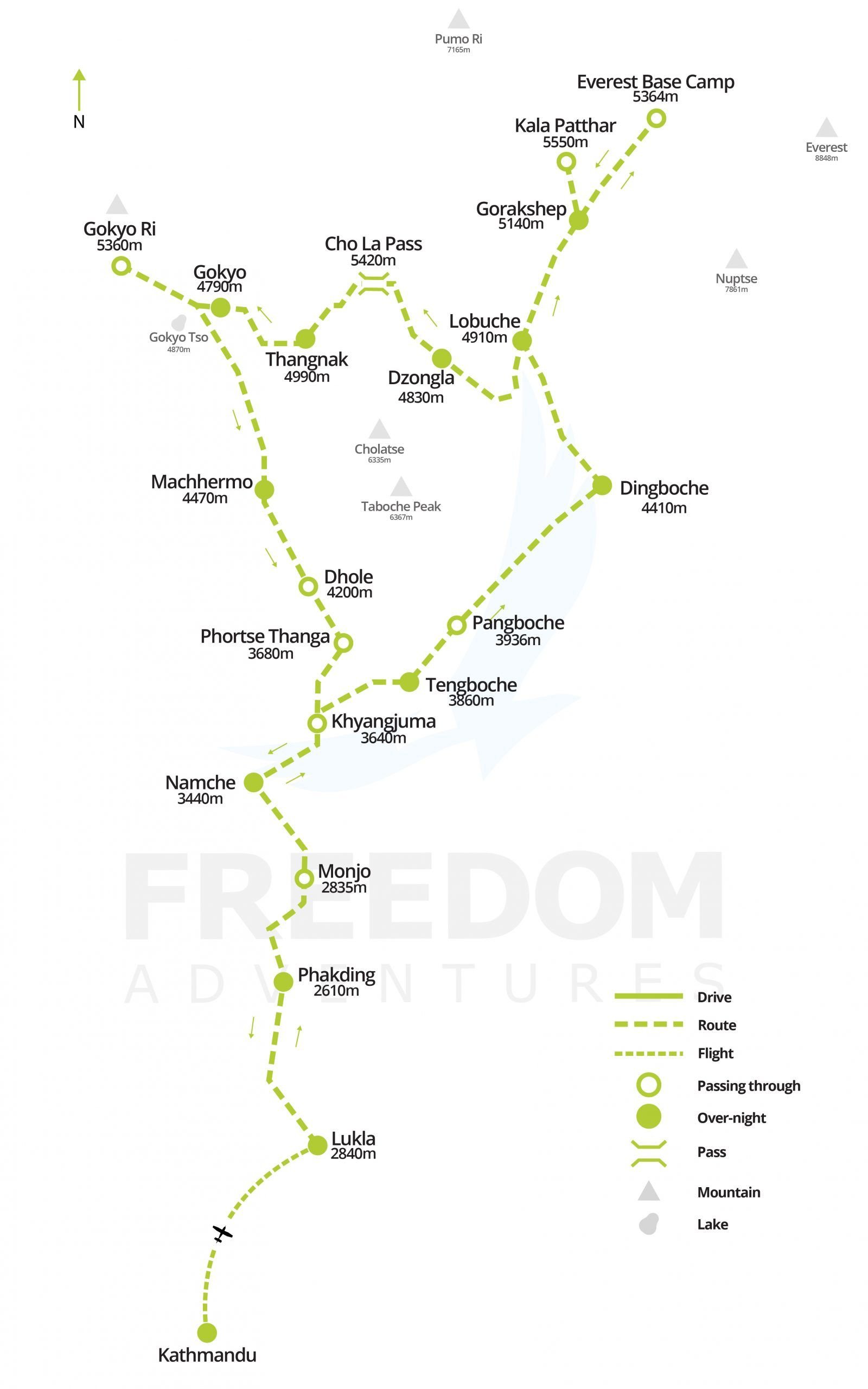
The map above shows both the Gokyo Lakes Trek route and the Everest Base Camp trek route. Both begin at Lukla and head up to Namche. It's at Khyangjuma where the two diverge. The traditional Everest Base Camp Trek route follows the right hand path on the map. You’ll travel through the Everest Valley (sometimes called the Khumbu Valley), up to the base camp. While there are some slight detours (you can go through a few different villages, and stop overnight at different places), you’ll essentially be walking the same route twice.
Meanwhile, the Gokyo Lakes Trek is a circuit, so you won’t be retracing your steps. You’ll also begin at Lukla, before travelling off to the west (along the route listed on the left hand side of the map). You trek through the Gokyo Valley, which is lined with a string of vast glacial lakes.
There’s the option to walk up a hill called Gokyo Ri. At the top you’ll be treated to some of the most incredible views in the Himalaya - on a clear day you can see Everest, and some of the highest mountains in Nepal.
After that, you’ll descend to Gokyo village and then trek up Ngozumpa Glacier to cross Cho La, a steep mountain pass (5,420m). At the top is an amazing panorama of the Himalayan peaks. From Cho La you’ll descend into the Everest Valley and join the main trail to Everest Base Camp (5,364m). You’ll return to Lukla via the Everest Base Camp Trail.
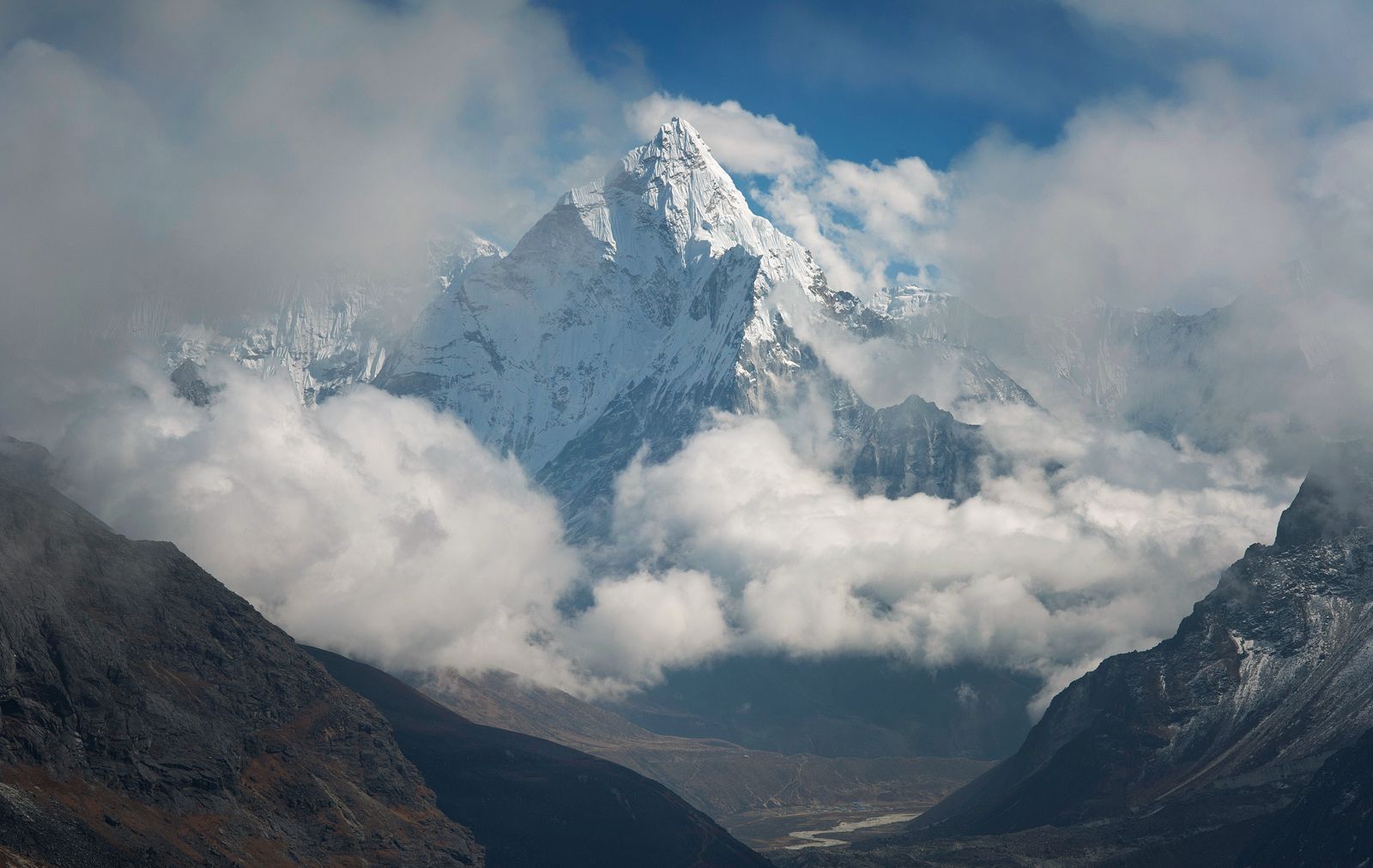
The Differences between Everest Base Camp vs Gokyo with Everest
The Everest Base Camp trek can get busy, and accommodation might be crowded. The Gokyo Lakes trek is a lot quieter (although you will spend some time on the main trail), and the accommodation will be less busy.
On the Gokyo Lakes Trek, since you’ll be travelling a circular route, you’ll experience a greater diversity of scenery. You’ll be trekking through two valleys, Khumbu and Gokyo. The latter is more untouched, characterised by its beautiful, deep turquoise lakes and remote villages.
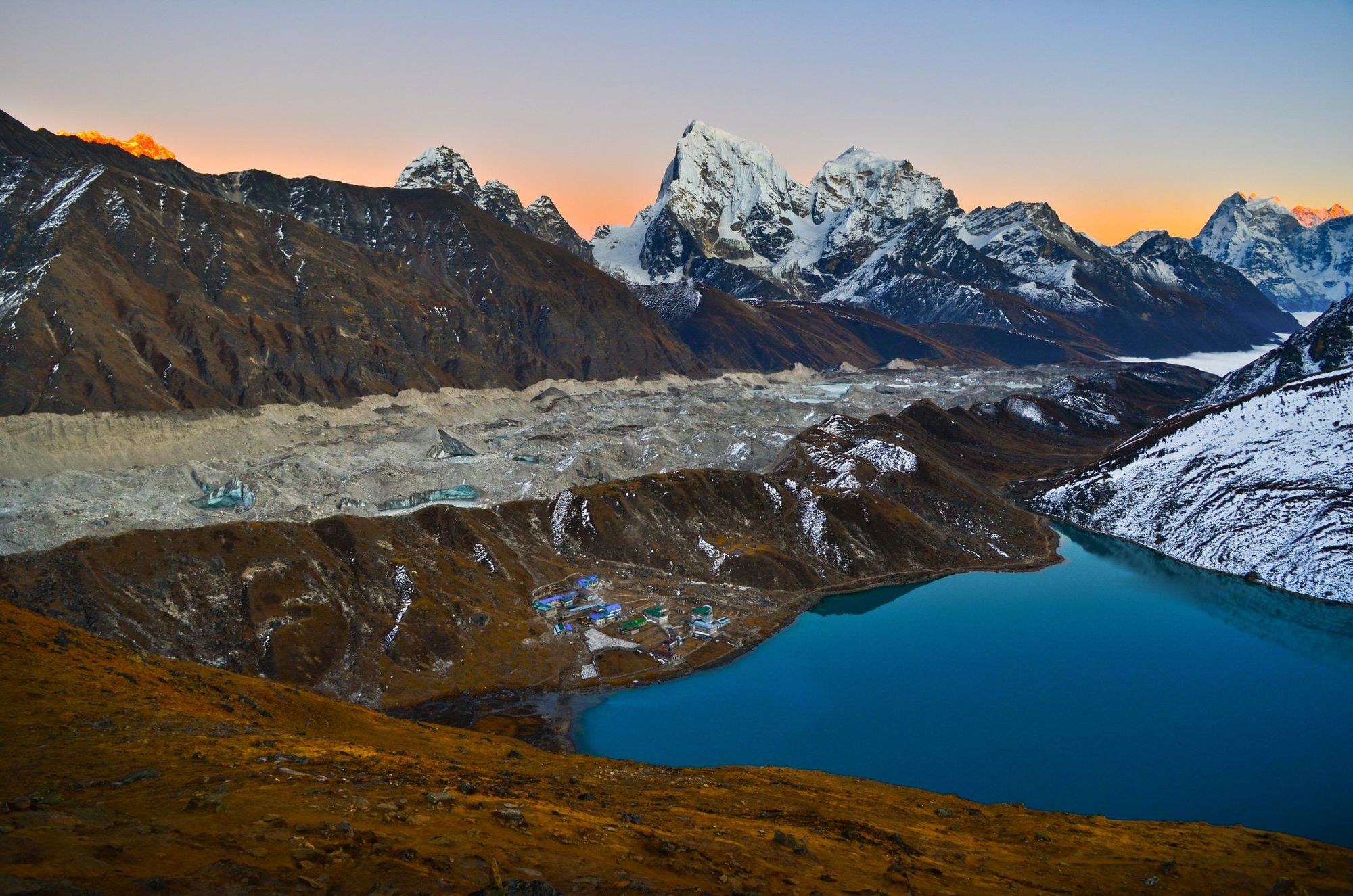
Hiking the Everest Base Camp trek takes 11-12 days, and is a 106 kilometre route. It takes 15-16 days to trek to Everest Base Camp via Gokyo Lakes, and the route is around 135 kilometres. The extended route length means that the Gokyo Lakes Trek is considered the harder of the two, and you’ll also need more time to complete it. It’s worth remembering that you’ll also need to factor in time for acclimatising, and travelling to and from Lukla.
You can do the Everest Base Camp Trek any time between September and May. The same is true of the Gokyo Lakes Trek. However, as Cho La is one of the highest passes in the area, it can become impassable during the winter months (December and January) if there’s heavy snowfall. Your guide will lay out an alternative route - either trekking further into Gokyo Valley or retracing your steps to the main trail - but you do need to be aware of the possibility this might happen.
How Hard is the Gokyo Lakes Trek?
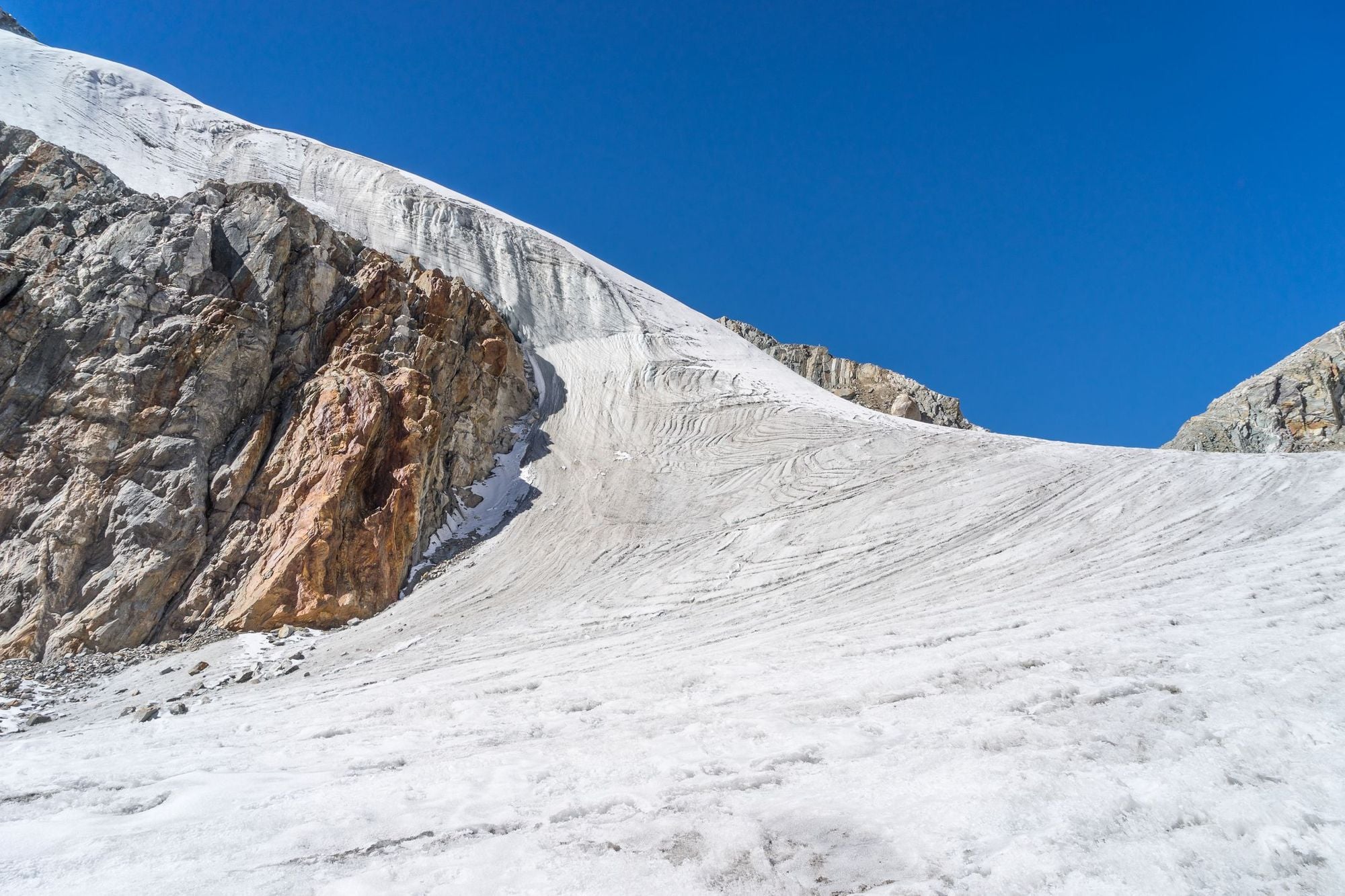
Both Everest Base Camp Trek and the Gokyo Lakes Trek are considered challenging, as they’re multi-day treks in remote, high-altitude environments. Both treks have the same peak elevation (5,545m at the peak of Kala Patthar). At these elevations, you’ll find yourself getting short of breath more easily, as the air is thinner. You’ll be carrying day packs and walking for around six hours a day. The weather is also unpredictable, which can make walking more difficult.
However, the Gokyo Lakes Trek is considered the more challenging of the two, due to two main factors: its longer duration, and having to negotiate Cho La. The ascent is steep and the path is rocky - you’ll have to scramble to reach the top. The upper part of the path is often covered in snow and ice - during the winter months you’ll need crampons to negotiate the terrain.
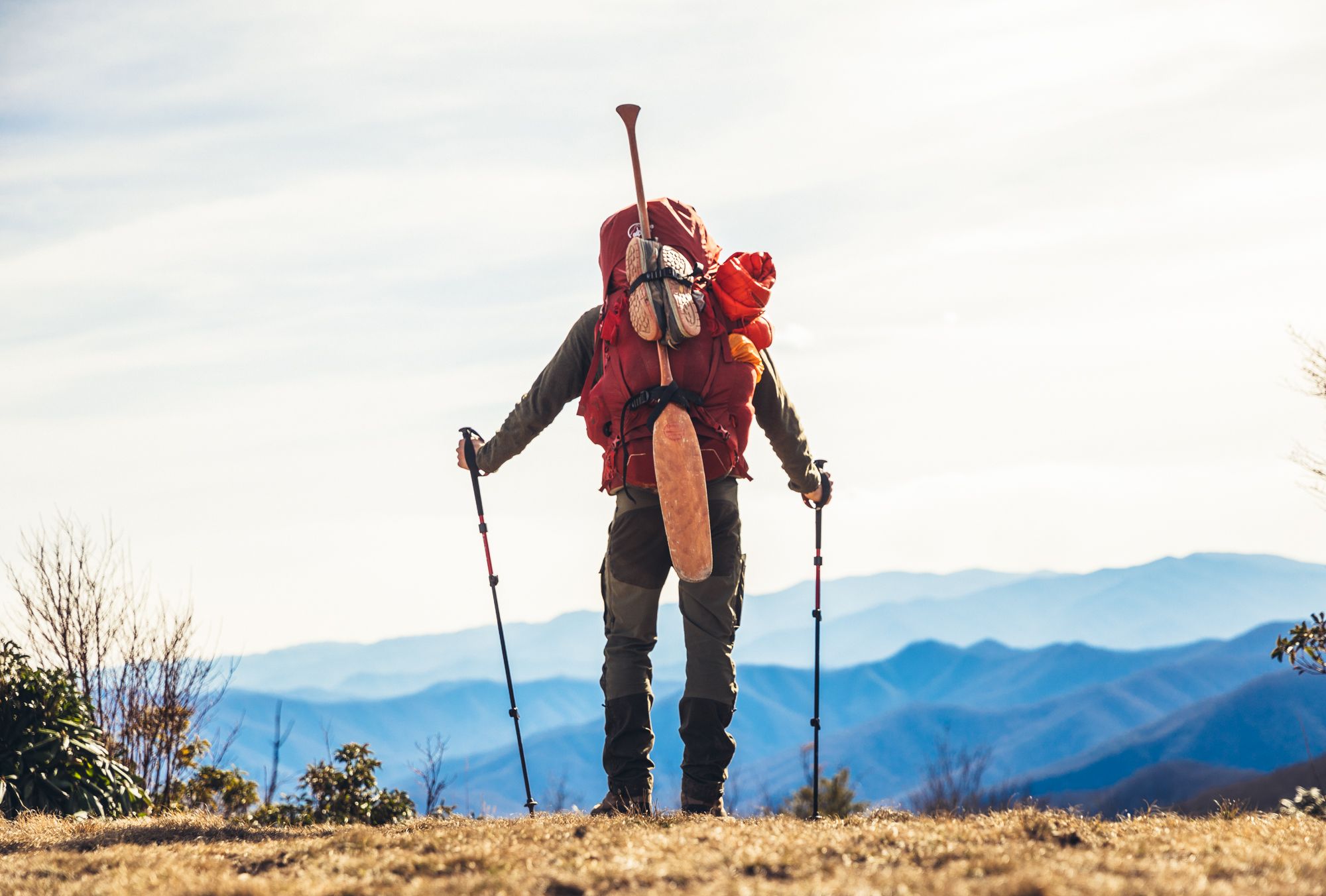
In order to undertake the Gokyo Lakes Trek, you’ll need to be in good physical health, and also be an experienced walker. We recommend a solid training plan, and getting a few, shorter, multi-day hikes under your belt before signing up for it. However, no technical mountaineering training is required.
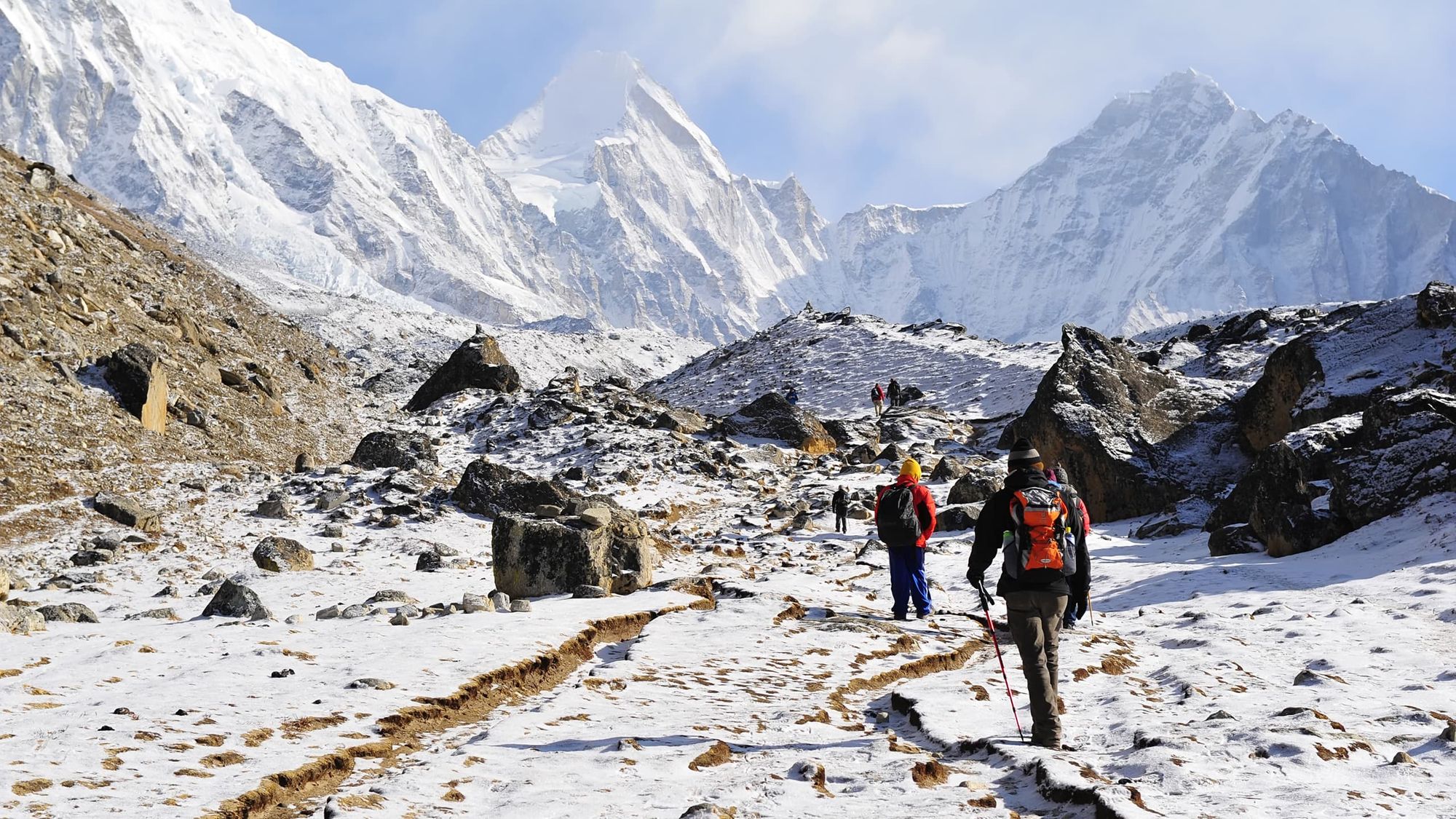
So, Which Trek Should You Do?
There are several things to consider before making a decision:
How much time do you have?
The Everest Base Camp Trek is shorter.
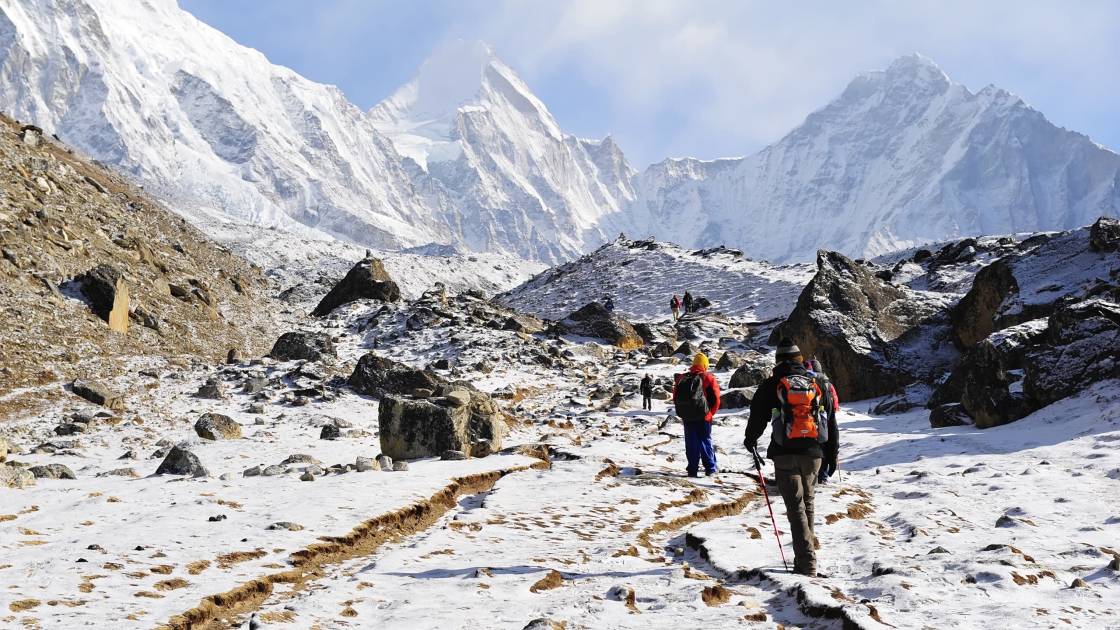
How experienced are you at trekking?
Both treks are challenging, but the Gokyo Lakes Trek involves three more days of walking, and the ascent of a high pass.

What interests you most, a variety of landscapes or seriously impressive mountains?
Both routes deliver some amazing views of the Himalaya, but arguably the best mountain view is at the top of Choro La (on the Gokyo Circuit). The Gokyo Lakes Trek also has more varied landscapes, as you'll pass by some gorgeous glacial lakes.
Is cost a factor?
Everest Base Camp Trek, being shorter, is ever so slightly cheaper.
Do you want to get away from the crowds?
Gokyo Lakes Trek is a quieter route.
Do you mind retracing your steps?
You'll be doing a circuit on the Gokyo Lakes Trek, while Everest Base Camp is a linear out-and-back route.
There is, of course, no right or wrong choice, but these tips should hopefully give you the information needed to decide which route is best for you.
How do I get to the Gokyo Lakes Trek Start Point?
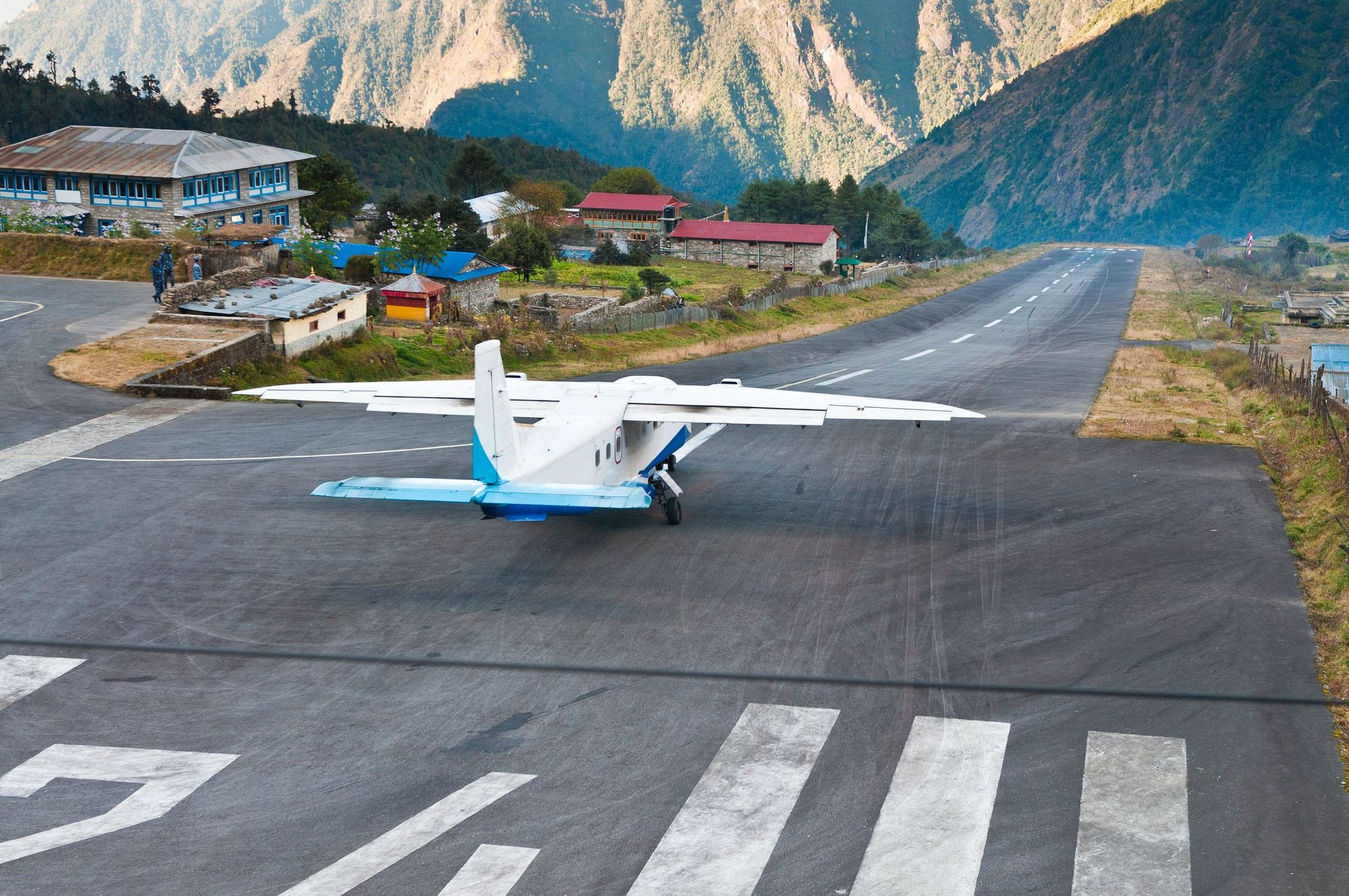
The closest international airport to the trailhead at Lukla is located in the capital of Kathmandu. It has direct flights from destinations across Asia and the Middle East. If you’re coming from Europe or the Americas, you can connect via one of the transport hubs in the Middle East, such as Dubai or Abu Dhabi. Coming via New Zealand or Australia? Then search for flights via Singapore or Kuala Lumpur.
You can sometimes find flights from Kathmandu to Lukla. More often, you’ll have to fly out from Manthali Airport, around four hours’ drive away. If you’re on a guided trip, your host will arrange these connections for you. If you’re travelling independently, you’ll need to take a coach to Manthali, and a taxi to its airport.
From Manthali, you’ll take a flight to Lukla Airport. It’s well known for its dramatic landing strip, which is surrounded on all sides by high mountains. Once you disembark, you’ll be ready to start trekking.
Inspired? Check out our small group adventure, Trekking The Everest and Gokyo Lakes Circuit.
Enjoyed this article? You might like our other Everest Base Camp stories, features and guides:
An introduction to Everest Base Camp: Everything you need to know about Everest Base Camp, from the routes to the best time to do it!
What to pack for the trek to Everest Base Camp: We share our ultimate packing guide including insider tips from our very own Head of Adventure, Megan Devenish, and our Adventure Operations Manager (and resident Nepal expert) Jenny Cox!
Customer Story: Everest Base Camp and Gokyo Lakes: Much Better Adventurer Tom Millar shares his experience of the Base Camp and Gokyo Lakes trip.
Customer Story: Everest Base Camp: See EBC through the eyes of photographer and Much Better Adventurer Olly Edgecombe.
Solukhumbu District Guide: An introduction to the Solukhumbu District and Everest Region of Nepal.




